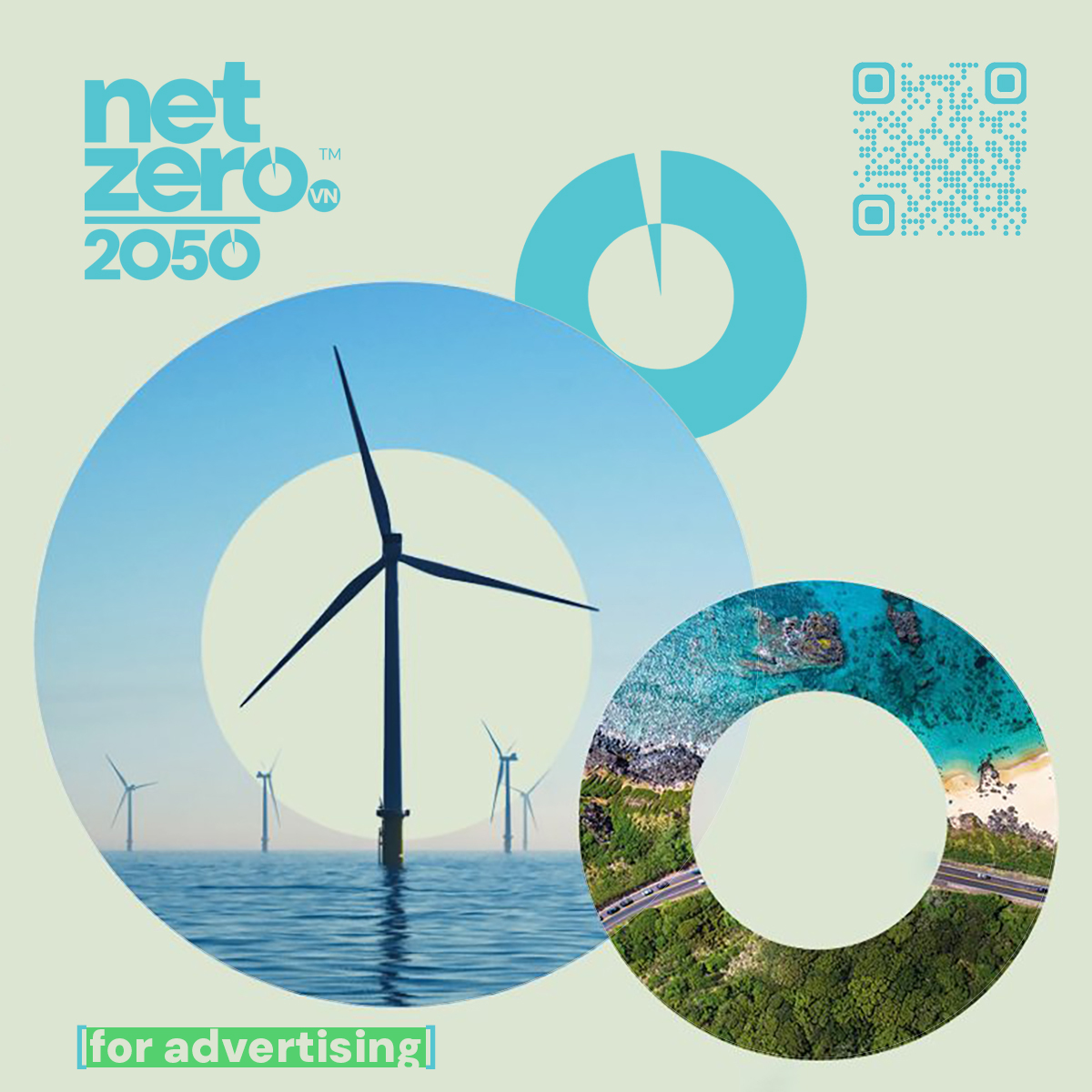
Board IV has closely followed the issue of green transition over the past three or four years. Why has green industry become such a “game-changer”?
In 2022, Board IV partnered with McKinsey to develop the first report on the green transition, which was submitted to the Prime Minister. We identified it as a global race – a strategic turning point, and highlighted several of Vietnam’s unique competitive advantages.
It is encouraging to see that the green transition and sustainable development are now being recognized and adopted by many businesses as a direction for growth in the new context.
Vietnam is targeting 8 per cent GDP growth in 2025 and over 10 per cent annually from 2026 to 2030, aiming to escape the middle-income trap and become a high-income country by 2045, while also achieving its net-zero emissions by 2050 commitment. These are ambitious and difficult targets, but they are essential.
Historically, very few countries have successfully overcome the middle-income trap. Models like South Korea, China, and Japan were supported by strong protectionist policies and operated with fewer environmental constraints; conditions that differ greatly from those Vietnam faces today, as global standards for sustainability and green development become more stringent.
Vietnam is now facing dual pressure points: internal reforms to transform its growth model, and external pressures as the international environment presents increasingly complex challenges to its development path.
The international context is shifting rapidly, putting pressure on Vietnam. Could you elaborate on the current global trends, especially the rise of green non-tariff barriers?
The global landscape is changing quickly, sometimes on a daily basis, but three major trends are worth noting.
First, the multilateral trade system is weakening, with tariff wars initiated by the US and a growing number of non-tariff barriers.
Second, there is a resurgence of industrial policy, as seen in strategies adopted by the US, China, the EU, and other major markets for Vietnamese exports.
Third, there is a clear movement at both the national and corporate levels towards reaching net-zero commitments.
These external pressures stem from shifting policies, supply chain restructuring, carbon reduction demands, and a shift away from globalization towards regionalization. After the supply chain disruptions caused by Covid-19, economic and trade policies have increasingly become tied to national security concerns.
Given these challenges, does Vietnam have sufficient resources to carry out its green transition?
Vietnam’s net-zero emissions goal hinges on a key principle: a just transition supported by the international community. Many developed countries have a head start, with strong financial and technological foundations that make their transitions smoother. Moreover, green transition and sustainable development are not isolated policies; they require a full ecosystem of coordinated industrial, fiscal, and emissions-reduction policies. In this regard, Vietnam’s policy framework remains fragmented and has yet to catch up with both domestic needs and international dynamics.
Financially, Vietnam is under significant pressure. With a low starting point, the country needs an estimated $368 billion from 2022 to 2040 to build resilience and cut emissions, or 6.8 per cent of GDP per year, according to the World Bank. This includes $184 billion from the private sector, $130 billion from the public sector, and $54 billion from international sources.
Despite the growing financial need, Vietnam still lacks comprehensive financial strategies. The green taxonomy – a classification system for sustainable economic activities – has only recently been issued, meaning the country does not yet have a strong “common language” to attract green capital. Moving forward, Vietnam must leverage international support, expand green finance instruments, and enhance the role of the private sector.
What is your view on the global resurgence of industrial policy, and has Vietnam taken any concrete steps towards developing green industries?
Industrial policy has often been criticized for distorting markets, picking winners, and enabling corruption. However, Covid-19 and the resulting supply chain disruptions prompted many major economies to return to industrial policy as part of national security strategies.
The US has introduced major legislation such as the Inflation Reduction Act and the CHIPS Act, offering financial incentives to bring production and investment back home or to strategic partners. China’s “Made in China 2025” initiative aims for it to become the world’s leading manufacturing power by 2049, with milestones in 2025 and 2035. Thirteen key sectors have been prioritized, including semiconductors, AI, green tech, electric vehicles, and robotics. Except for commercial aviation, it is now approaching global leadership in most of these sectors.
Vietnam, in this context, also needs a well-designed industrial policy with a structure that incorporates green industries. With strengths in offshore wind and solar power, the country can develop green industrial clusters in regions with competitive advantages. This could drive local breakthroughs while contributing to national growth and emissions reduction goals.
For instance, McKinsey’s 2022 report highlighted Ba Ria-Vung Tau province (now part of Ho Chi Minh City) as a strategic location for petrochemical and renewable energy industries. These clusters could contribute $15 billion and generate 102,000 jobs for the local economy.
We emphasize the need for a new industrial model, one where human resources, infrastructure, institutions, and investment incentives are coordinated. For example, to attract high-level semiconductor experts, Vietnam will need “golden” visa policies, income tax incentives, one-stop administrative procedures, and next-generation industrial parks that integrate ports and logistics centers.
In your view, where does Vietnam currently stand in its development journey compared to other countries?
According to the World Economic Forum (WEF)’s framework, countries typically progress through three stages of development: (1) based on raw resources and cheap labor; (2) focused on improving efficiency in resource allocation and usage; and (3) driven by innovation, technology, and digital transformation.
Vietnam is now moving through both stages 2 and 3 simultaneously. The country is undertaking reforms to improve resource efficiency while shifting its growth model through enhanced science and technology capacity, innovation, and digitalization. Resolution No. 57-NQ/TW dated December 22, 2024, has opened up new space for the development of science, technology, and innovation.
After nearly 40 years of “Doi Moi” (Economic Renewal), Vietnam has made significant socio-economic progress and become a middle-income country with one of the highest annual growth rates globally. However, its growth model based on resource-intensive development has reached its limit. Economic growth is slowing on a decadal basis, and without a fundamental shift it will be difficult for Vietnam to sustain the average 7 per cent growth needed to reach high-income status by 2045. Domestic policy shifts, particularly the “Four Key Resolutions”, reflect a strong vision and determination by the leadership amid rising global uncertainties.
Regarding its net-zero emissions commitment, sustainable development should be seen as a goal in itself, serving public welfare and long-term societal well-being. In the transition process, we must balance international expectations with domestic realities, align policies with practice, and manage the trade-off between growth and sustainability. Achieving this balance requires a holistic, pragmatic approach rooted in global context.
One recent trend is that many major financial institutions, such as HSBC and Morgan Stanley, have quietly extended their net-zero deadlines or withdrawn from these commitments altogether. Likewise, many governments and businesses are scaling back their sustainability targets due to economic pressures and global instability. When forced to choose between economic growth and sustainability, many countries have prioritized growth.
Given these developments, very few countries are currently on track to meet their net-zero commitments. Vietnam, however, has shown leadership by pledging to achieve net-zero emissions by 2050. This will require considerable effort, innovative approaches, and breakthroughs to transform the economy accordingly.
How can Vietnam leverage its geographic and resource advantages? What policy directions has the government taken to support green industry development?
Vietnam has substantial renewable energy potential, particularly in offshore wind and solar power. With more than 3,260 km of coastline and an average wind speed of 7 m/s, the country is well positioned to develop offshore wind farms, produce green hydrogen, and establish coastal green industrial clusters.
Cities and provinces such as Hai Phong, Quang Ninh, Binh Thuan (now part of Lam Dong), Ninh Thuan (now part of Khanh Hoa), and Ba Ria-Vung Tau (now part of Ho Chi Minh City) have competitive advantages for developing such industries. Vietnam could also export renewable energy, particularly to markets like Singapore.
There are three main strategic directions for green industry development: greening existing industries, such as steel; establishing new sectors, including renewable energy, alternative fuels like green hydrogen, green ammonia, and advanced biofuels; and forming coastal green industrial clusters, designed around integrated value chains
These approaches can help boost productivity, maintain high growth, and support Vietnam in meeting its net-zero emissions goal by 2050.
How do you interpret the message of “harmonizing” growth and sustainability, as emphasized at the Green Industry Forum?
Vietnam is pursuing dual goals: achieving high economic growth while reaching net-zero emissions by 2050. This requires harmony between growth and sustainability, domestic and international factors, government policies, and business capabilities, especially in how we design future industrial systems.
Green industry should not be seen as a trade-off but as offering synergy. It can deliver both economic value and environmental performance.
Looking to 2045, what types of industrial brands do you hope Vietnam will be proud of?
If Vietnam becomes a high-income country by 2045, a key question will be: What strategic products and global brands will represent that success, like Samsung for South Korea or Toyota for Japan? This isn’t just a vision; it needs to be a strategic goal shaped today.
A strong economy can’t rely on a single engine. In today’s volatile world, Vietnam must strengthen its internal capacity. Building capable domestic enterprises alongside a complete industrial ecosystem is essential.
Politburo Resolution No. 68-NQ/TW on the development of the private economy not only aims to remove barriers, such as administrative burdens or access to capital, but to also encourage a shift in mindset, positioning private businesses as a driving force in innovation and growth. National development challenges must align with Vietnam’s competitive advantages, respect market principles, and keep pace with global trends.
Key industries like railways, semiconductors, AI, new energy, automotive, large-scale shipping fleets, and logistics hubs are areas where Vietnamese enterprises can grow and contribute meaningfully to national development.
“Think globally – Act practically” is the message I want to send to the business community. We are not outsiders to global shifts; we are part of the momentum, and with smart transitions, we can even shape the future.
Nguyệt Hà




